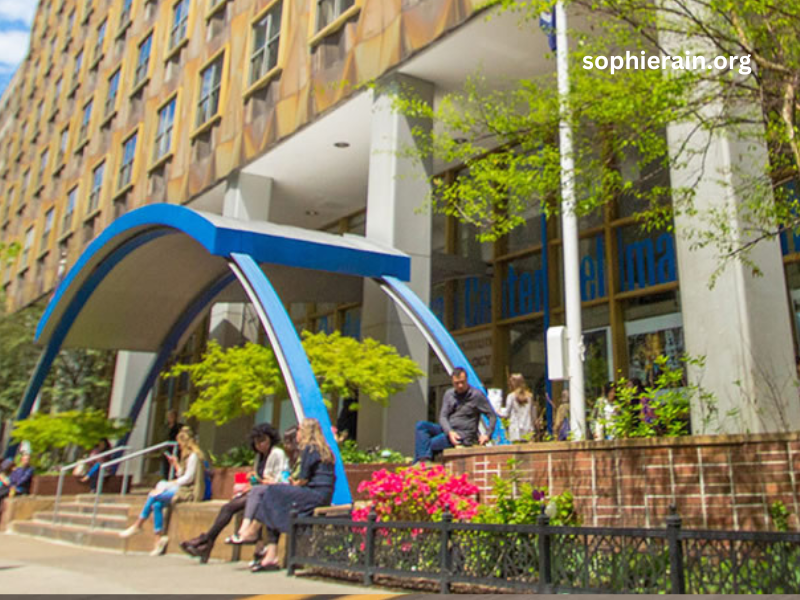The Fashion Institute of Technology (FIT), part of the State University of New York (SUNY) system, is renowned for its specialized programs in fashion, art, business, and technology. With its vibrant campus located in New York City, FIT attracts a diverse pool of applicants from all over the globe. As a potential applicant or someone interested in the institution, understanding FIT’s acceptance rate and what it signifies can be crucial for your decision-making process. This article will delve into the acceptance rate at FIT, factors influencing it, admissions requirements, and tips for improving your chances of acceptance.
Overview of the Fashion Institute of Technology
Established in 1944, the Fashion Institute of Technology is a public college dedicated to preparing students for careers in fashion, design, art, and business. With a variety of undergraduate and graduate programs, FIT has carved out a niche as one of the leading institutions in fashion education. The school offers degrees ranging from Associate to Bachelor and Master’s levels across multiple disciplines, including fashion design, marketing, and visual arts.
Acceptance Rate at the Fashion Institute of Technology
The acceptance rate at FIT fluctuates yearly, influenced by various factors such as the number of applicants and the available slots in programs. As of recent statistics, FIT’s acceptance rate hovers around 50%, making it moderately selective. This means that for every 100 applicants, approximately 50 are admitted. It is essential to note that this rate can vary significantly between different programs, with some more competitive programs in fashion design having lower acceptance rates compared to others in fashion business or marketing.
Factors Influencing the Acceptance Rate
Program Popularity
The popularity of specific programs directly affects the acceptance rate. Programs such as Fashion Design or Fashion Merchandising tend to attract more applicants, leading to a more competitive admissions process. Consequently, these programs may have lower acceptance rates compared to others.
Application Pool
The overall number of applications received each year influences the acceptance rate. If FIT receives a higher number of applications in a given year, the acceptance rate may decrease as the institution strives to maintain its educational standards and resources.
Qualifications of Applicants
The qualifications of the applicant pool can also impact acceptance rates. As more students apply with strong academic records, impressive portfolios, and relevant experience, it raises the bar for admission, potentially lowering the acceptance rate.
Shifts in Industry Demand
As the fashion and design industries evolve, certain programs may become more sought after, influencing both the number of applicants and the acceptance rates for those specific programs.
Admission Requirements for FIT
To be considered for admission to the Fashion Institute of Technology, applicants must meet specific requirements, which may vary depending on the program. Here are the general admission requirements:
High School Diploma or Equivalent
All applicants must have a high school diploma or a recognized equivalent, such as a GED.
Transcripts
Submission of official high school transcripts is required, showcasing a strong academic performance, particularly in relevant subjects like art and design.
Standardized Test Scores
FIT does not require SAT or ACT scores for admission, but strong scores can enhance an application, particularly for competitive programs.
Portfolio
For programs such as Fashion Design, applicants must submit a portfolio demonstrating their skills and creativity. A strong portfolio can significantly enhance the chances of acceptance.
Personal Statement or Essay
Applicants typically need to submit a personal statement or essay detailing their motivations for pursuing a degree at FIT and outlining their career goals.
Letters of Recommendation
Some programs may require letters of recommendation from teachers or professionals who can speak to the applicant’s qualifications and potential.
Interview
Certain programs may require an interview as part of the admissions process. This gives applicants an opportunity to present themselves and their work in a more personal context.
How to Improve Your Chances of Acceptance
Given the competitive nature of admissions at FIT, particularly for popular programs, here are several strategies to enhance your chances of being accepted:
Develop a Strong Portfolio
For programs that require a portfolio, ensure it showcases your best work. Include a variety of projects that reflect your skills, creativity, and understanding of the field. Quality over quantity is crucial.
Maintain Strong Academic Performance
A solid GPA can set you apart from other applicants. Focus on achieving good grades, especially in subjects relevant to your desired program.
Gain Relevant Experience
Internships, part-time jobs, or volunteer experiences in the fashion or art sectors can strengthen your application. They demonstrate your commitment and understanding of the industry.
Craft a Compelling Personal Statement
Use your personal statement to convey your passion for fashion and design. Discuss your career aspirations and how FIT can help you achieve them.
Seek Strong Letters of Recommendation
Choose recommenders who know you well and can speak positively about your abilities and character. A strong letter can provide valuable insight into your potential as a student.
Prepare for Interviews
If your program requires an interview, practice common interview questions and be ready to discuss your portfolio, experiences, and motivations.
Understanding the Importance of Acceptance Rates
The acceptance rate at the Fashion Institute of Technology is a critical metric for prospective students. It reflects the competitiveness of the admissions process and can help students gauge their chances of acceptance based on their qualifications. However, it’s essential to remember that the acceptance rate is not the sole indicator of the institution’s quality or fit for you as an applicant.
The Role of Fit
When considering acceptance rates, it’s crucial to assess whether FIT aligns with your academic and career goals. The institution offers unique programs and a vibrant campus culture that may be highly appealing, regardless of its acceptance rate. Engage with current students, attend open houses, and research the curriculum to understand better if FIT is the right choice for you.
Future Trends in Acceptance Rates
As the fashion industry continues to evolve, FIT may see shifts in its acceptance rates. Increased interest in sustainability, technology integration, and digital fashion may lead to changes in program demand. Prospective students should stay informed about industry trends and how they may impact admissions.
Conclusion
The Fashion Institute of Technology offers an exciting opportunity for students passionate about fashion, design, and technology. While the acceptance rate hovers around 50%, understanding the factors influencing it and how to strengthen your application can make a significant difference in your chances of admission. By focusing on creating a standout portfolio, maintaining strong academics, and effectively articulating your goals and motivations, you can enhance your application and increase your likelihood of becoming part of this prestigious institution.
As you navigate the admissions process, remember that FIT is more than just its acceptance rate. It is a vibrant community where creativity and innovation flourish, and your potential to contribute to that community is what truly matters. Whether you’re aiming to design the next big trend or innovate within the industry, your journey at FIT could be the stepping stone to a successful career in fashion and beyond.






